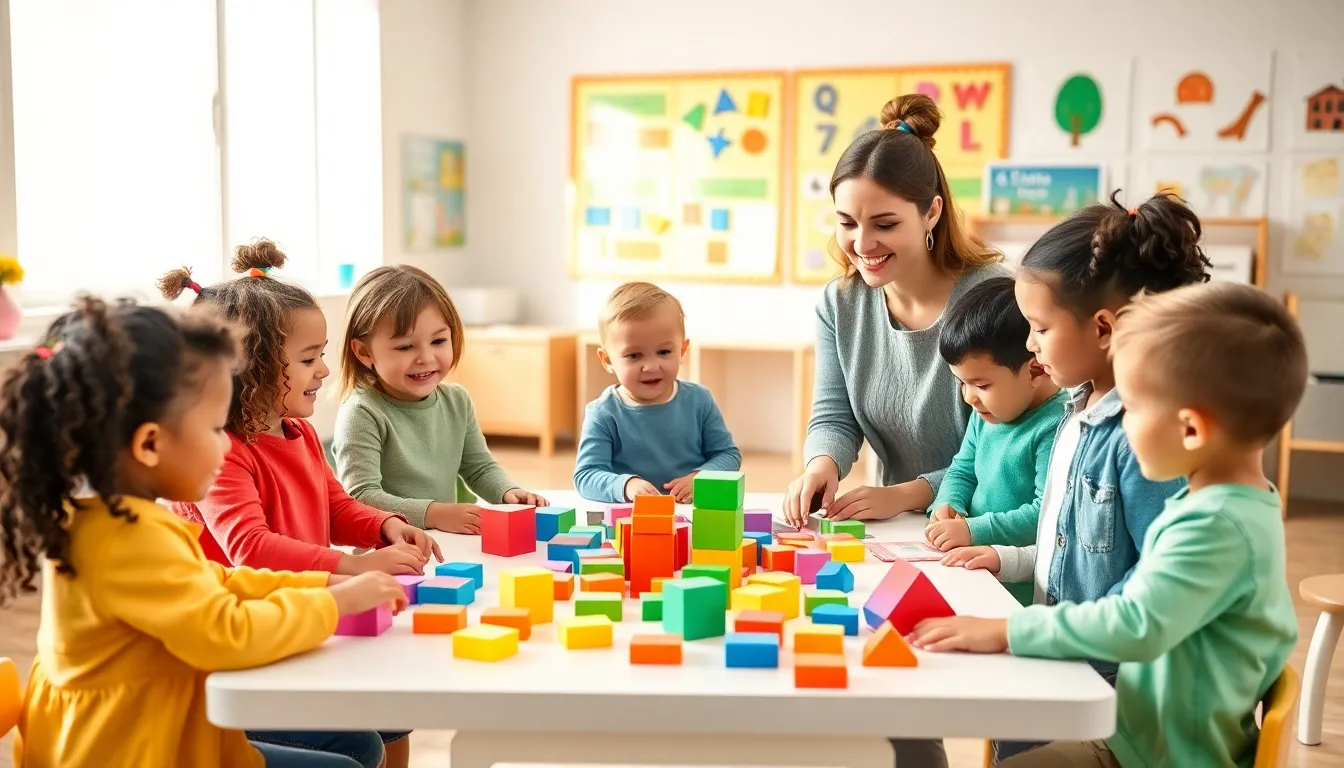Shapes are all around us, and what better way to introduce them to young minds than through play? Teaching shapes to preschoolers isn’t just educational: it can also be incredibly entertaining. Imagine a room full of giggles as little ones learn to recognize circles, squares, and triangles while engaging in fun activities. It’s a win-win situation: they learn vital concepts while having a blast. So, buckle up as we explore the importance of shapes and jump into engaging activities that will make learning these fundamental building blocks of knowledge exciting.
Table of Contents
ToggleImportance Of Teaching Shapes Early

Understanding shapes lays the foundation for numerous skills that children will use throughout their lives. From building blocks to geometry in later years, recognizing shapes is crucial. Early exposure aids in cognitive development: it helps improve a preschooler’s mathematical skills and is linked to better spatial awareness. Also, when children start identifying shapes at a young age, they enhance their observation and reasoning abilities. Recognizing shapes becomes second nature, which can lead to increased confidence in their learning journeys. Preschoolers who grasp this concept early often excel in tasks that involve visual-spatial relationships later on.
Fun Activities To Introduce Shapes
What better way to capture the imagination of preschoolers than through hands-on activities? Here are a few engaging ideas that will have kids learning without even realizing it:
Shape Scavenger Hunt
Turn the world into a playground of discovery. With a colorful checklist, children can explore the environment to find everyday objects shaped like circles, triangles, and squares. Make it a competition to see who can find the most shapes, inspiring teamwork and observation skills.
Shape Sorting Game
Gather various objects and create a playful sorting station. Use blocks, cut-out shapes, or even kitchen utensils to encourage kids to group items based on their shapes. This game allows preschoolers to recognize and name shapes while honing their cognitive skills.
Shape Dance-Off
Put on some upbeat music and let the kids show off their moves. Assign different dance moves for each shape. For instance, when they hear “circle,” they twirl, when they hear “square,” they step in a box shape. This activity adds movement to learning, making it all the more enjoyable.
Using Everyday Objects To Teach Shapes
Everyday objects can be fantastic tools for teaching shapes. They’re not just mundane items in the home: they become exciting learning aids. Think about using:
- Plates: Round plates make perfect circles. Attach different sizes and colors in a craft session to reinforce shape recognition.
- Boxes: Rectangular boxes can help illustrate squares and rectangles. Arrange them at different angles to show how perspectives can change their appearance.
- Food: Kids love snacks, right? Cut fruits like apples into circles or sandwiches into triangles. They’ll associate shapes with fun, delicious experiences.
Interactive Games And Apps For Learning Shapes
In our tech-savvy world, using interactive games and educational apps has become a popular method for teaching preschoolers. Numerous apps focus on early math skills, including shape recognition. Here are a couple to explore:
- Shape Builder: This engaging app allows kids to experiment with constructing shapes, enhancing their understanding of dimensions while having fun.
- Endless Alphabet: While primarily focused on vocabulary, this app introduces shapes intertwined with words. The blend of visual and auditory learning reinforces shape recognition.
When it comes to games, consider classic ones like “Simon Says” where you can add shape commands. For example, “Simon says, touch something that’s a rectangle.” This interactive format makes learning shapes a playful and imaginative experience.
Incorporating Art And Crafts In Shape Lessons
Art projects can effectively reinforce shape learning. Here are some exciting craft ideas:
- Shape Collage: Provide various colored paper shapes. Let the children create their unique collages, developing fine motor skills while identifying shapes.
- Shape Painting: Use sponges cut into different shapes to create art. Dip them in paint and let kids stamp shapes on paper, leading to an eye-catching masterpiece while enhancing shape recognition.
- Shape Masks: Kids can design masks using various shapes, allowing their creativity to shine while simultaneously reinforcing what they’ve learned.
Assessing Shape Recognition In Preschoolers
Measuring how well preschoolers grasp basic shapes can be both informative and entertaining. Here are a few strategies:
Observation
Simply watching how children interact with shapes during activities can provide insight into their understanding. Do they confidently identify shapes when asked? Are they engaged during activities?
Shape Quizzes
A fun way to assess them. Use flashcards showing different shapes and see if they can name them. Keep it light: the goal is to learn, not to pressure.
Incorporate Play-Based Assessment
Through games and group activities, you can observe their shape recognition in a natural setting. If they succeed in a shape sorting game, you can infer they’re on the right track.


